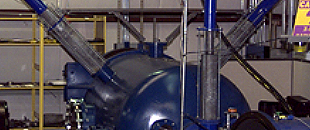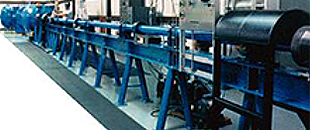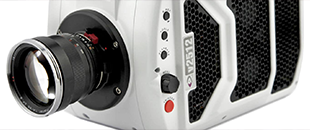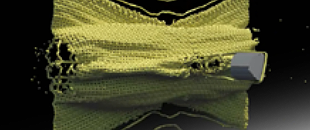Impact Research: High Speed Cameras
The high speed cameras that are used at the HVIT are Cordin High Speed Shadowgraph Cameras.
They are capable of taking images at a rate of 2.5 million per second. These cameras are quite
unlike any conventional camera. The film is fixed around around a circular housing; at the center
of the circle is a rotating mirror powered by a compressed gas turbine.
There is no shutter; instead, the light source is a pulsed laser, timed to strike the rotating
mirror in such a way that it exposes one frame of film per pulse. Since the film is stationary,
each test is limited to only 80 frames of film. If you are operating the camera at 1 million
frames per second, that's 80 microseconds of filming. Fortunately, that's plenty of time, since
impacts last only a few microseconds.
 Right Image: Projectile in flight prior to impact event.
Center Image: Debris and ejecta cloud formation right after impact.
Left Image: Space Station Remote Manipulator System (SSRMS).
Right Image: Projectile in flight prior to impact event.
Center Image: Debris and ejecta cloud formation right after impact.
Left Image: Space Station Remote Manipulator System (SSRMS).
 Diagnostic Tools
Diagnostic Tools Light-Gas Guns
Light-Gas Guns High Speed Cameras
High Speed Cameras Hydrocode Simluations
Hydrocode Simluations